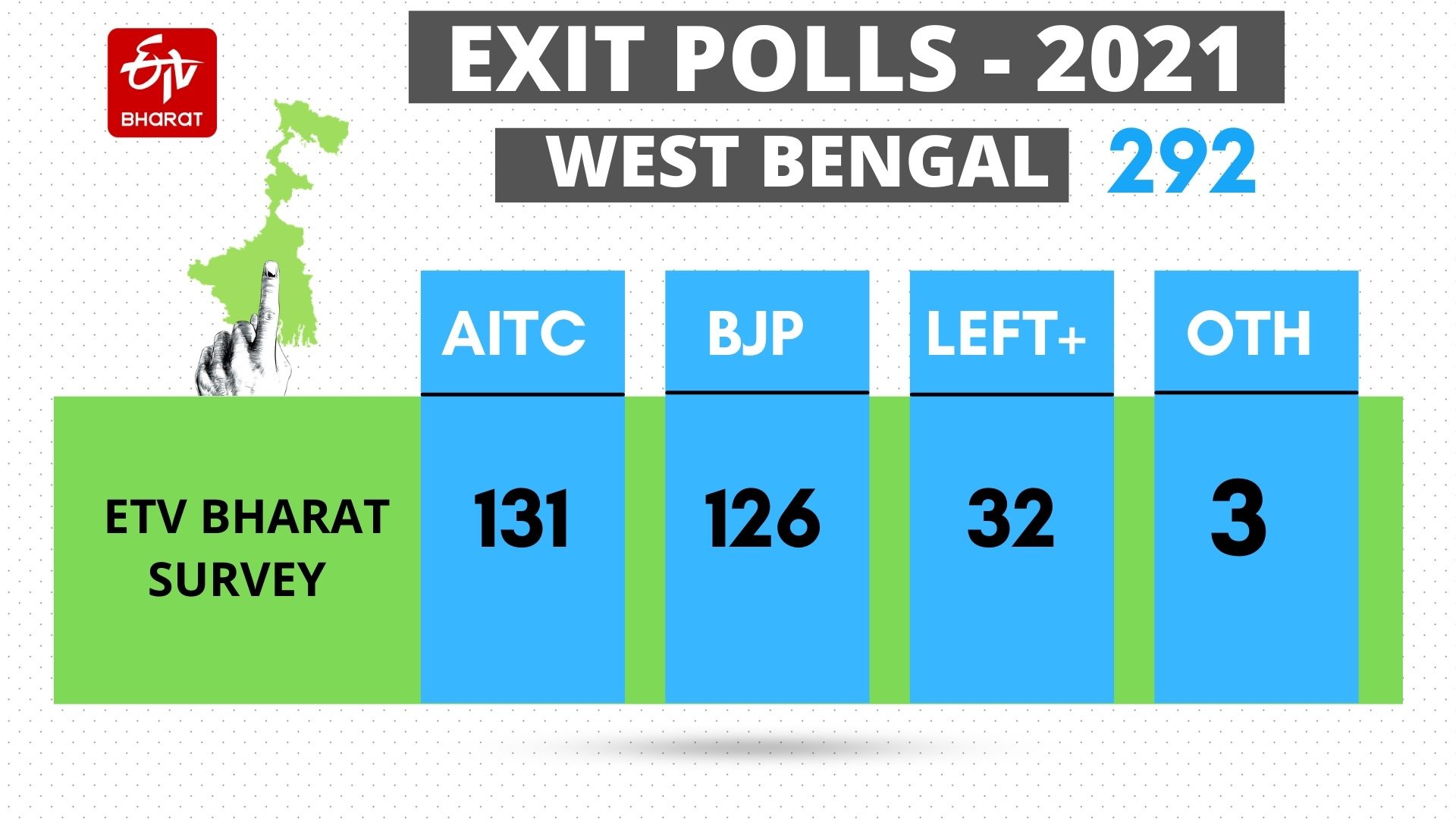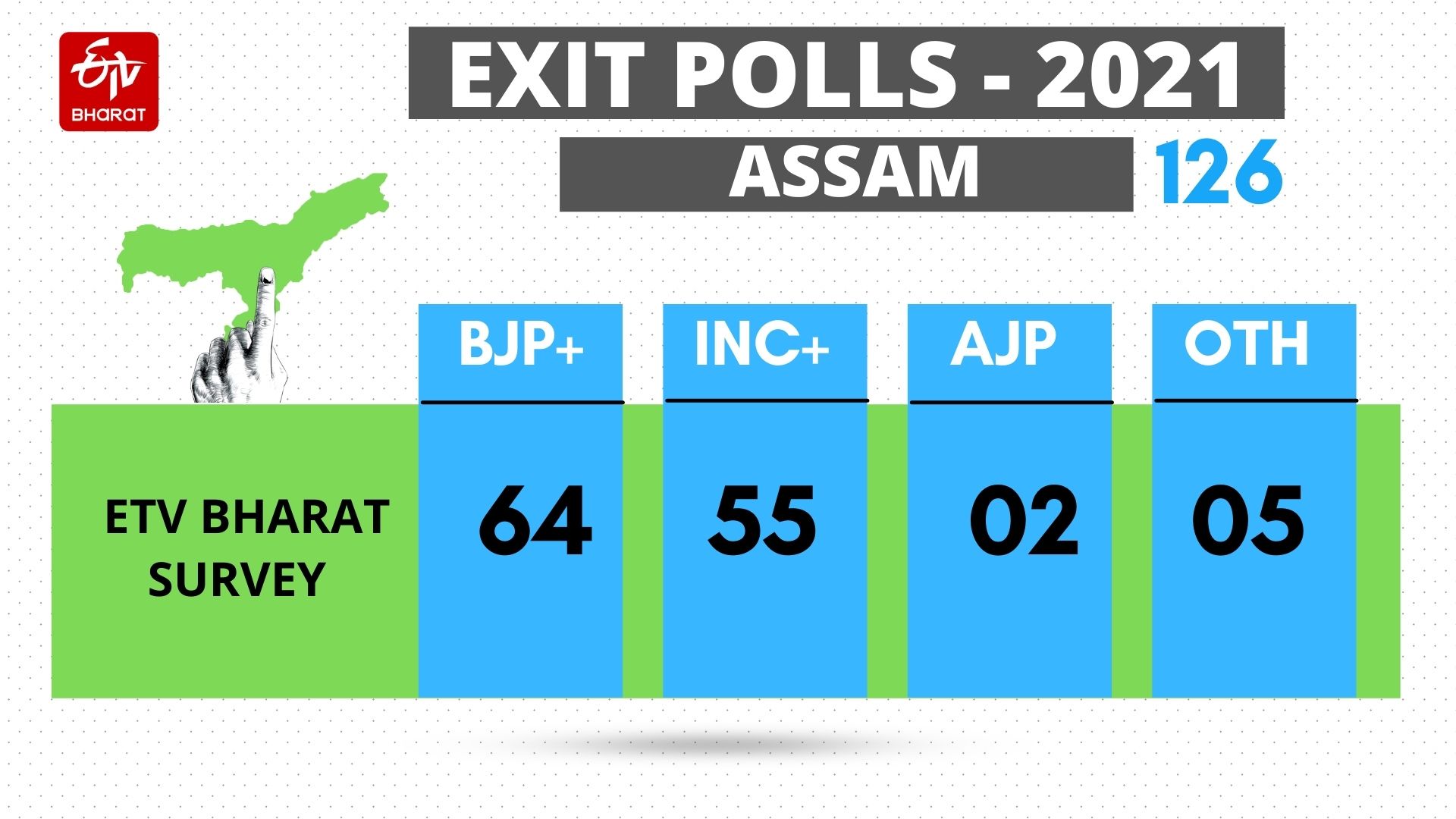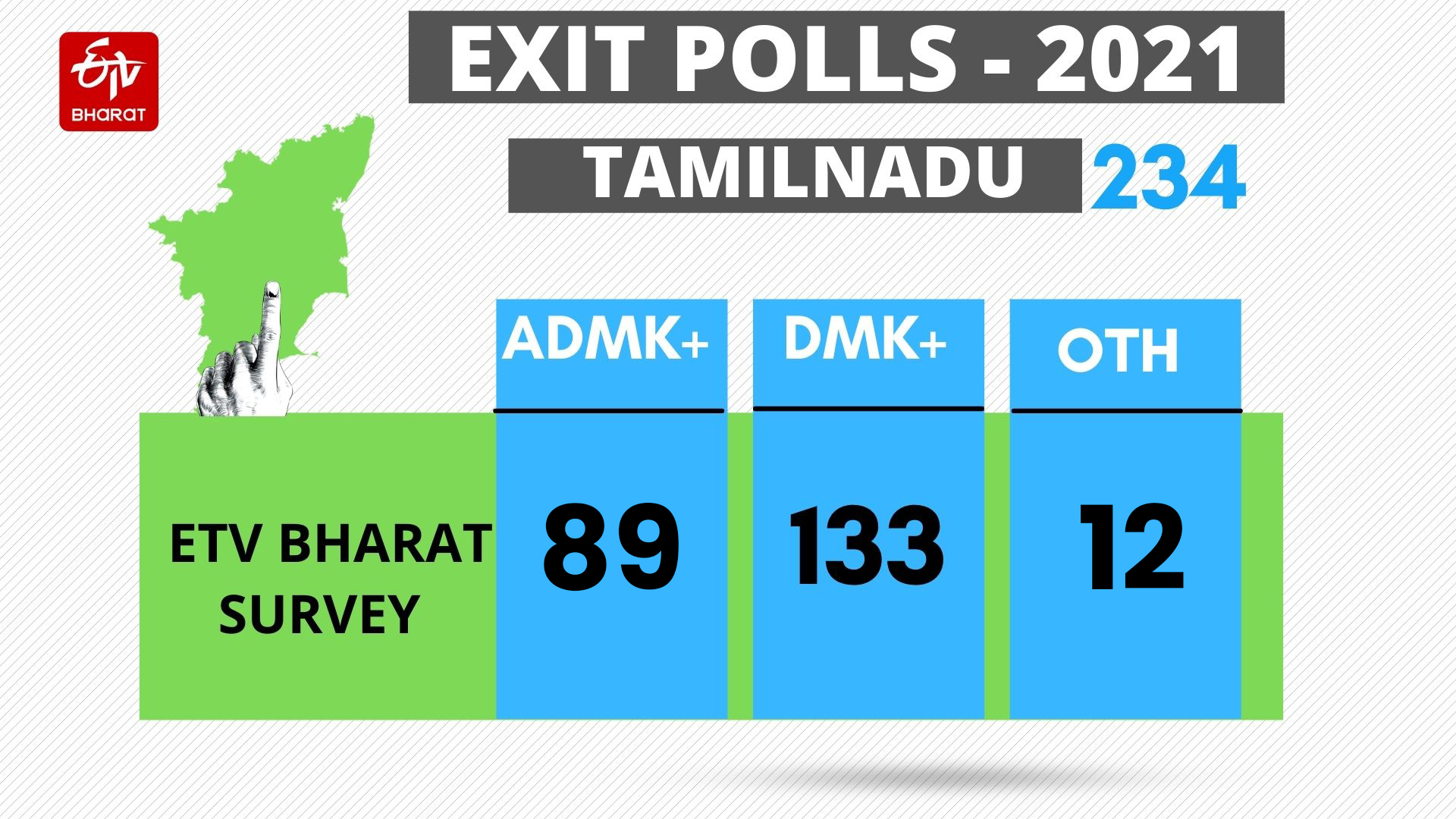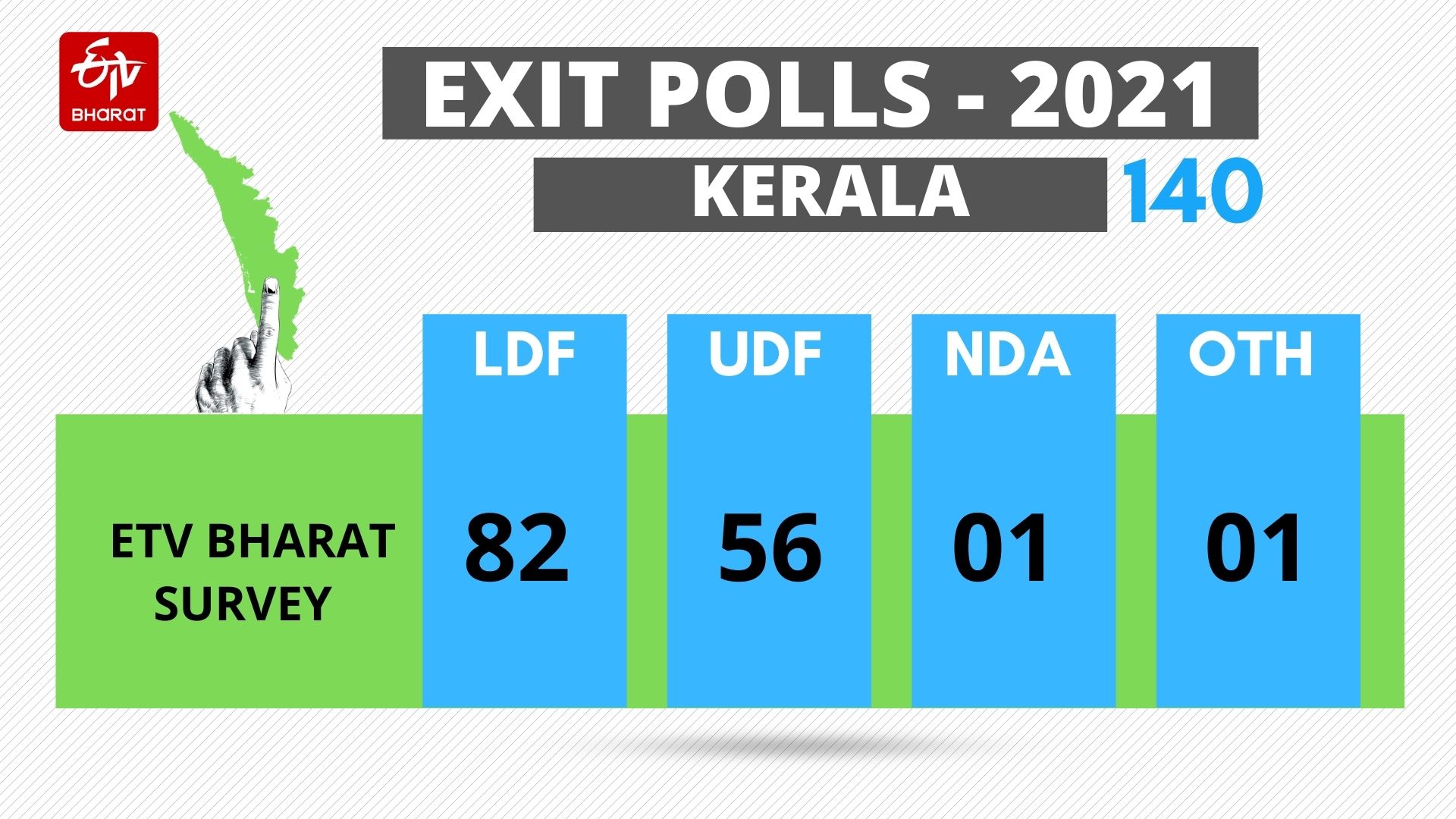Hyderabad: On May 2, when the EVMs will be brought out from the strong rooms in the four states of Assam, West Bengal, Tamil Nadu, Kerala and Union Territory of Puducherry, the futures of many candidates will come to the fore. Some will never know what happened to their political fate as at least six candidates in different states succumbed to the Coronavirus infection. Nevertheless, it will be an election, which will be remembered for some time for close calls, catcalls and the likes.

Never an Assembly election in any of the states in India drew such attention as West Bengal and its 294 Assembly seats did. Starting from the Election Commission, which decided to hold the polls in a protracted eight-phases to the saffron brigade’s plunge to snatch power from the ruling Trinamool Congress led by Mamata Banerjee to the Left Front and Congress allying with a new partner, that of All India Secular Front (AISF) floated by a cleric Peerzada Abbas Siddiqui, the state has witnessed a unique poll season. The election process was conducted in 292 Assembly constituencies as candidates in two seats died due to Covid infection.
Read:| West Bengal Assembly Elections: What do the exit polls say?
Braving 10-years' anti-incumbency and facing mounting allegations of nepotism and favouritism in the southern parts of the state, particularly after the devastation caused by severe cyclonic storm Amphan, Mamata went to the polls with all guns blazing and taking her new opposition, the BJP, head-on from the signature Nandigram seat. She had left her Bhabanipore seat in South Kolkata, which used to be the home for luminaries like Netaji Subhas Chandra Bose, Satyajit Ray and Shyama Prasad Mookerjee, with the trusted hands of Trinamool’s veteran legislator Shovandeb Chattopadhyay.
The BJP, which has emerged as the principal opposition party in the state after the decimation of the Left Front and the Congress, threw their entire might and effort to secure the eastern state, which had never been in their kitty. From Prime Narendra Modi to Union Home Minister Amit Shah to the party’s national president JP Nadda, everyone made a beeline for the state to secure the numbers in favour.
This election of Bengal also played on the sub-text of polarisation and regional caste factors. The sentiments of Matuas were given international credence with Prime Minister Modi finding time to visit the caste’s holy site in neighbouring Bangladesh during his tour of that country amid the polls. Amit Shah had repeatedly reached out to the Rajbanshis in North Bengal who have considerable sway over as many as 35 seats. The BJP was leaving no stones unturned.
Read:| Kerala Assembly Elections: What do the exit polls say?
Bengal witnessed a campaign-style it had never seen before – that of a gastronomical type. From Shah to Nadda to state party president and motormouth Dilip Ghosh, everyone was found gulping morsels between campaigns at some under-privileged sympathiser's house. The campaign pitch was both bitter with rivals spitting venom on each other, as well as music with parties making parodies and spoofs of chartbusters in their attempt to woo voters.
Mamata Banerjee knew that it was tough this time. The BJP knew it didn’t have a face to the project as its chief ministerial candidate and to take on the charisma of Mamata. The Left Front, Congress and their allies knew they had a slim chance, though they had shrugged off most of their old guards and brought in young, talented candidates to usher in a fresh wave. But, the poll projection of ETV Bharat shows that neither of the parties is close to the magic figure of 148 seats, which gives the mandate to form the next government in the state.
The projection indicates that Trinamool Congress could get as many as 131 seats, the BJP could bag around 126 seats, the Left Front and its allies can have 32 seats with three seats going to others.
Will the fractured mandate in Bengal open options for horse-trading? Will the survey go wrong and anyone party secures the requisite number to form a government? The EVMs are packed and sealed for now. May 2 holds the answers.

The lush green fields and hillocks of Assam went for three-phase polls and had witnessed a straight fight between the BJP and the Congress-All India United Democratic Front (AIUDF) combine, which also has seven other parties. In this gateway state to the North East, ETV Bharat projection throws up some interesting numbers.
Read:| Tamil Nadu Assembly Elections: What do the exit polls say?
The projection is that the BJP-led alliance is likely to get around 64 out of the total 126 Assembly seats in Assam, while the Congress-led grand alliance could bag around 55 seats. The newly floated Asom Jatiya Parishad (AJP), the Raijor Dal, led by jailed farmers’ rights activist Akhil Gogoi and the independents could bag the remaining 7 seats.
Voters’ mood swung in Assam in between the BJP’s development agenda for the past five years, based on which they sought votes for a second term, and that of the massive popular sentiment against the Citizenship (Amendment) Act raked up by the Congress. The grand old party also hoped to regain some of its minority vote shares by allying with Badruddin Ajmal’s AIUDF. Apart from this, a tactical advantage for Congress could be its alliance with the Bodoland People’s Front (BPF), which could influence the outcome of at least 12 seats. Assam might go to the BJP again, but might not be a sweet win minus the hiccups. With chief minister Sarbananda Sonowal gradually overshadowed by his deputy Hemanta Biswa Sarma, any photo finish could change tables.

From East to the South.
For Tamil Nadu, it seems that the road ends for EPS and the DMK is all set to form the next government in the state. ETV Bharat projection shows the DMK Front could bag as many as 133 seats, whereas the AIADMK Front's kitty could only have 89 seats and 12 seats going to others. The state went to the polls on April 6 for its 234 Assembly seats.
The Dravida Munnetra Kazhagam (DMK), which lost the election narrowly in 2016, is all set to form the next government with party president MK Stalin as the front runner for the Chief Minister's post.
For incumbent Edappadi K Palaniswami (EPS), who has been able to keep the AIADMK flock together since power was the glue that aided that feat besides the support of the BJP at the Centre, it seems that he has missed the bus after 10 years. Despite the ruling party expected to secure 90 seats, with western Tamil Nadu remaining its stronghold, the future of the Dravidian major appears to be at crossroads. According to the projections, the DMK is well past the halfway mark
Read:| Assam Assembly Elections: What do the exit polls say?
The projection indicates a landslide for the DMK Front, comprising the Congress, Left parties, Viduthalai Chiruthaigal Katchi, Muslim Parties and a few other parties. Considering the alliance arithmetic, it is better positioned than the AIADMK for which the tie-up with the BJP was considered as a liability. With the elections in Tamil Nadu happening after a very long time in the absence of overarching personalities like M Karunanidhi or his bete-noire Jayalalithaa, it probably will offer proof of MK Stalin emerging as a leader in his own right.
Other likely prominent winners include Udhayanidhi Stalin, the GenNext leader of the DMK from Chepauk-Triplicane constituency, party veteran Duraimurugan from Katpadi and Tiruchirapally strongman KN Nehru.
While chief minister EPS is expected to romp home from his native Edappadi, most of his cabinet colleagues might not swim ashore. Sasikala's nephew, TTV Dhinakaran, who has once again proved to be the nemesis of the AIADMK, might emerge victorious from Kovilpatti.
The Congress is all set to retain the Kanyakumari Lok Sabha seat for which a bypoll was held along with the Assembly election. According to the projection, the party is well poised in Sivaganga district, the fief of former Union finance minister P Chidambaram. The Left parties and the VCK of Thol Thirumavalavan, which are part of the DMK-Front, are also expected to get representation in the new Assembly.
If Stalin finally walks home with the numbers, a huge challenge of implementing the DMK poll promises, which include waiver of educational loans and Rs 1500 payout a month to women, including single mothers among other things, will wait for him.

In neighbouring Kerala, the 140 Assembly seats, which were up for grabs, ETV Bharat’s projection indicates that the CPI(M)-led Left Democratic Front is going to have a historic consecutive second term, indicating that there is no anti-incumbency wave in God’s own country.
Read:| Puducherry Assembly Elections: What do the exit polls say?
LDF may lose about 11 seats from what they acquired in the 2016 elections, bringing their tally down to 82 this time from 93, but, it is predicted that the Reds will be back in power with a comfortable majority.
Social welfare measures, development works and strong leadership at times of crisis like that of the Nipah outbreak, consecutive floods or the Covid pandemic, were the reasons that people chose to vote for the Pinarayi Vijayan led LDF, the predictions show,
The LDF did lose some ground that they had gained at the beginning of the campaign owing to various allegations of corruption and nepotism raised by the opposition Congress or the relay strike by PSC rank holders, yet better governance had finally spoken in favour of Vijayan and his comrades.
The UDF will have to settle for 56 seats this time raising their tally from 45 of 2016. While the central Kerala and IUML strongholds continue to safeguard the votes of UDF, the exit of Kerala Congress (M) from the UDF could affect them badly. Kerala Congress (M) is now an ally of the LDF. The strong vote bank of the IUML could come as a literal saviour for the Congress from a bad rout as traditional Congress constituencies seem to have swayed for the Left.
Even the Rahul Gandhi factor has failed to dent the LDF’s juggernaut in the Assembly segments dotting Rahul’s Wayanad Lok Sabha seat. The projections indicate that four out of the seven Assembly seats that had voted for the Congress in 2019, has decided to go for the LDF.
The situation gets repeated in Trivandrum, where Congress’ Sashi Tharoor won comfortably in 2019. The LDF has a distinct edge here and could win as many as four out of the seven Assembly seats within the limits of the Trivandrum Lok Sabha constituency.
The NDA alliance led by BJP may have to contend with the lone seat that they won in the 2016 elections. Both LDF and UDF have given a tough fight at Nemom, where BJP's first legislature O Rajagopal won the last elections. Chances of Metroman E Sreedharan winning from Palakkad is bleak.
All eyes will surely be on May 2 for the final numbers.




